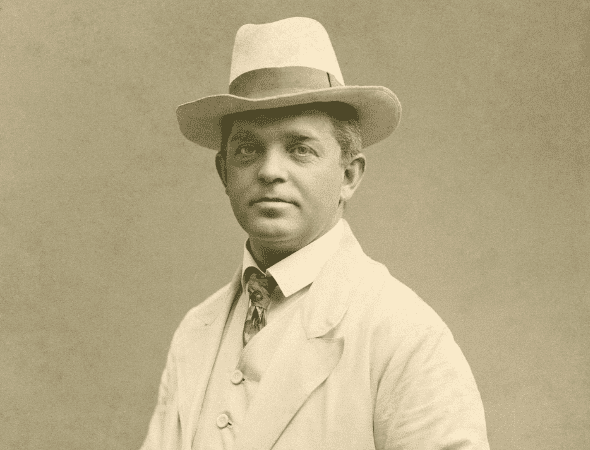NIELSEN: Flute Concerto
by Jeff Counts
THE COMPOSER – CARL NIELSEN (1865–1931) – Anyone interested in reading Carl Nielsen’s own thoughts about his incredible life in music must thank his daughter Irmelin. It was at her consistent urging that he offered his one and only autobiography for publication in 1927. It was a reminiscence of his early days called “My Childhood on Funen.” Also the birthplace of Hans Christian Anderson, Funen is Denmark’s third largest island and, in and around its fertile farmland, it boasts castles, stone age ruins, and Viking relics. The book only covers Nielsen’s life up to his departure for Copenhagen to start his formal studies and, written from the distant perspective of the composer’s last years, it is only fair to acknowledge that it includes the occasional embellishment.

THE HISTORY – Contemporary to the writing of the memoir for Nielsen, was a project meant to capitalize on the popularity of his Wind Quintet (1922). The intention was to create separate concerti for each of the instruments in the Copenhagen Quintet that premiered the work, but sadly for the horn, bassoon, and oboe players of the world, Nielsen never completed the set. Of the two concerti he did write, the work for flute came first. But even it was delayed. Nielsen was struggling to wrestle down his Sixth Symphony at the time, so work on the first of the wind concerti did not begin in earnest until 1926. By then, the Copenhagen Quintet had replaced flutist Paul Hagemann with Holger Gilbert-Jespersen, so a new soloist/composer relationship needed to be established. Nielsen worked on the concerto in Florence, Italy through September and much of October of 1926 and Gilbert-Jespersen performed it on October 21. It was well received (Honegger was there and reportedly liked it) but the composer found it lacking. Of particular artistic concern for Nielsen was the temporary ending he had been forced to append due to an illness he developed on his travels, so he revised the score before taking the podium himself for the second, definitive presentation later in the year. Nielsen wrote a densely in-depth program note for the Flute Concerto in 1929. Some of the highlights of that essay regarding the first movement describe how the solo flute “moves about as if seeking something” before running through various states of being that include “impassioned expressions” and “pottering around here and there” before becoming “bored” and then “quite nervous”. The second movement narrative is less lengthy, but it is just as colorful, with mentions of a “maliciously” jabbing orchestra and a “child-like…innocent” soloist that meet by the end in a “lighter, more superficial, and smiling atmosphere.”
THE WORLD – Elsewhere in 1926, the UK faced a general strike in support of the empire’s coal miners, Germany signed the Treaty of Berlin with the Soviet Union, and Italian silent film star Rudolph Valentino passed away.
THE CONNECTION – Nielsen’s Flute Concerto was last performed by the Utah Symphony back in 1988. Joseph Silverstein was on the podium and Erich Graf was soloist.











